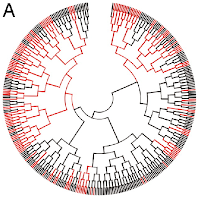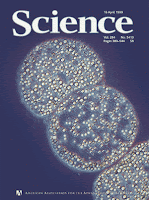 The so-called neglected diseases comprise a number of parasitic and bacterial infections which are the most common afflictions of humankind. So, how can these diseases be "neglected"? When you get sick, you don't ignore your illness, do you? But we all can ignore a disease... as long as we ourselves don't suffer it.
The so-called neglected diseases comprise a number of parasitic and bacterial infections which are the most common afflictions of humankind. So, how can these diseases be "neglected"? When you get sick, you don't ignore your illness, do you? But we all can ignore a disease... as long as we ourselves don't suffer it.
Neglected diseases are especially endemic in low-income populations in developing regions of Africa, Asia, and the Americas. They mostly affect the poorest people, living in remote rural areas, urban slums or conflict zones. In the meantime, the rest of humankind just "neglect" those pains, as exemplified by the poor coverage on news media.
(If you already know about these diseases, just jump to the paragraph starting with "An interesting study...")
According to the Global Network For Neglected Tropical Disease Control, the most prevalent neglected tropical diseases are:
But, unfortunately, the list of neglected diseases is much longer, including:
[disease name, causative agent]
- Sleeping sickness (African trypanosomiasis), Trypanosoma brucei (protist).
- Chagas' disease (American trypanosomiasis), Trypanosoma cruzi (protist).
- Leishmaniasis, Leishmania spp. (protist).
- Cholera, Vibrio cholerae (bacterium).
- Buruli ulcer, Mycobacterium ulcerans (bacterium, actinomycete).
- Leprosy, Mycobacterium leprae (bacterium, actinomycete).
- Yaws, Treponema pertenue (bacterium).
- Dengue/dengue haemorrhagic fever, Dengue virus.
- Dracunculiasis (guinea-worm disease), Dracunculus medinensis (nematode).
- Fascioliasis, Fasciola hepatica and F. gigantica (trematodes).
- A number of other neglected zoonoses (anthrax, rabies, etc.).
Wow, if you are still reading this, you must be really interested. Or you've just jumped over all those boring, unpronounceable words. That's OK. But the title of the post said "in the news", so let's go.
 An interesting study has just been published on the open-access journal PLoS Neglected Tropical Diseases, showing that these diseases rarely make the headlines... Oh, wait, we already knew that. True —but this report seems to be the first one trying to analyze, in a quantitative manner, the international media coverage of neglected diseases, as a support for future advocacy work.
An interesting study has just been published on the open-access journal PLoS Neglected Tropical Diseases, showing that these diseases rarely make the headlines... Oh, wait, we already knew that. True —but this report seems to be the first one trying to analyze, in a quantitative manner, the international media coverage of neglected diseases, as a support for future advocacy work.
The authors searched the archives of 11 English-language media, from January 2003 to June 2007, including 6 newspapers (The New York Times, Los Angeles Times, Washington Post, The Guardian, The Daily Telegraph, The Financial Times), BBC Online, CNN.com, Agence France Presse (AFP), and two news magazines (Time and The Economist). They analyzed coverage of "neglected diseases" in general, with a focus on African trypanosomiasis, leishmaniasis and Chagas' disease (probably not the most neglected). The researchers also interviewed leading health journalists, highlighting factors influencing reporting.
During the study period, they found only 113 articles on neglected diseases. In comparison, there were over 1000 articles on HIV/AIDS in the AFP database alone during the same period. There was wide disparity in coverage between the various media: the BBC had the highest coverage (20 articles), while CNN had the least coverage (only 1 article). Coverage of global health issues was particularly poor in the American media.
As the authors recognize, it would be useful to expand the analysis, including more international media and languages other than English. However, the selected media may be considered a useful sample, and some patterns emerged:
" For example, the penchant for a local angle was even parochial at times. Stories get written about leishmaniasis in pets before humans, as was seen in The Daily Telegraph. "
In the interviews, journalists explained that the main obstacles for reporting on these issues were: a lack of real news development, the drive to cater to domestic audiences, and competing health interests.
" “Poor people dying from an illness is not news,” unless there is some change or development, one producer from an international broadcaster said. But HIV/AIDS was widely reported on “because it sells stories” and has the funding and attention of policymakers. "
That's perfectly understandable: news media need to make a living, and only "newsworthy" stories get the attention. Here, the role of health agencies (either public or private) is essential: all journalists said health agencies were not communicating adequately about the burden of neglected tropical diseases. Some organizations (World Health Organization, Bill & Melinda Gates Foundation) were criticized for the difficulty in reaching officials for comment, while non-governmental organizations such as Médecins Sans Frontières (MSF) were cited as good sources for stories.
News coverage was also difficult due to the lack of powerful "human" stories from the field (including interviews with patients).
" The “human element” was powerful, but few journalists were able to get such stories first-hand from the field. This represented a real constraint for coverage. One communications advisor (consulting for DNDi) said health agencies needed to present stories featuring “real people” rather than “experts in their ivory towers” and the “yuck” factor about these diseases needed to be played up to “grab the public imagination” rather than facts about the lifecycle of the parasite. "
Remarkably, journalists who did cover these diseases were often personally motivated. Andrew Jack (Financial Times), who authored the largest number of articles detected in the study, said his reporting was “100%” driven by his interest.
In other words, a single individual can make a difference.
Original article (open access):
Balasegaram, M., Balasegaram, S., Malvy, D., Millet, P., Hotez, P.J. (2008). Neglected Diseases in the News: A Content Analysis of Recent International Media Coverage Focussing on Leishmaniasis and Trypanosomiasis. PLoS Neglected Tropical Diseases, 2(5), e234. DOI: 10.1371/journal.pntd.0000234
Related links:
Image credits:
Trypanosoma forms in blood smear from patient with African trypanosomiasis. Source: Public Health Image Library (PHIL). Content provider: CDC/Dr. Myron G. Schultz.
Read the rest of the article >>>
 Bad news: Merck has decided to close down its natural product research facilities. This means the end of CIBE (Centro de Investigación Básica de España) — or Spanish Center for Biological Research — located in Madrid, Spain. Since its creation in 1954, this center has been dedicated to the discovery of new compounds of therapeutical potential produced by microbes. These efforts led to the development of several useful medicines, including antibiotics (fosfomycin, cefoxitin, thienamycin), cholesterol-lowering drugs (lovastatin), and antifungal agents (caspofungin). In May 2006, Merck researchers hit the news with the discovery of platensimycin, a natural product belonging to a new class of antibiotics.
Bad news: Merck has decided to close down its natural product research facilities. This means the end of CIBE (Centro de Investigación Básica de España) — or Spanish Center for Biological Research — located in Madrid, Spain. Since its creation in 1954, this center has been dedicated to the discovery of new compounds of therapeutical potential produced by microbes. These efforts led to the development of several useful medicines, including antibiotics (fosfomycin, cefoxitin, thienamycin), cholesterol-lowering drugs (lovastatin), and antifungal agents (caspofungin). In May 2006, Merck researchers hit the news with the discovery of platensimycin, a natural product belonging to a new class of antibiotics.



















